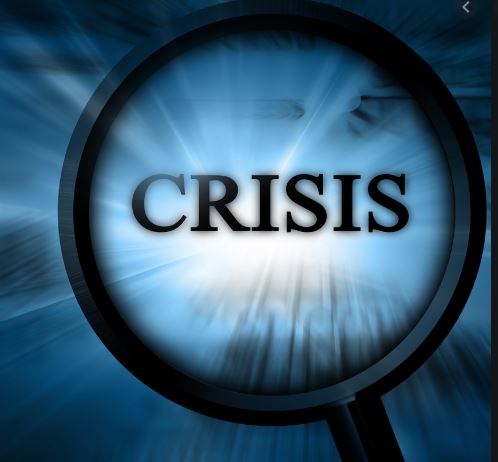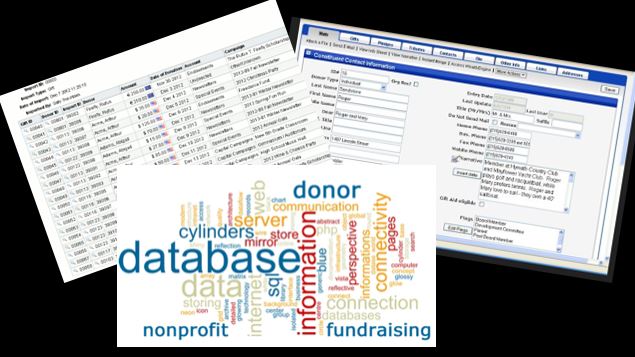We’re already learning many leadership lessons during this unprecedented COVID-19 global pandemic emergency – with much more to come.
What can nonprofit leaders do NOW to protect their organization from chaos and economic crisis?
Here are early insights, combined with lessons learned from the global economic meltdown of 2008 when many nonprofits – including the one I served as CEO – were able to avoid going under, emerging stronger than ever.
This is not a perfect prescription based on perfect knowledge, by any means. However, there are a few things you, a nonprofit leader, can do to increase your organization’s chances of surviving and thriving.
Quickly face the new reality: Things have suddenly changed.
The temptation, as a nonprofit leader, is to postpone decisions until “more is known.”
Don’t let your initial shock paralyze you from taking prudent, swift action – not rash decision making, but reasoned decisions based on facts.
Resist the temptation to wait for complete information or to “see how the situation plays out.” Your ability to rapidly assess the emergency and take prudent steps can mitigate financial damage and chaos.
Tell the truth, and nothing but the truth, based on your knowledge this very moment.
Don’t create panic, but don’t deny, discount or pooh-pooh the situation. Don’t pontificate about things you don’t know or understand. Avoid finger-pointing.
Provide accurate, frequent and timely updates to your board, leadership team, staff and clients. Do not try to be “all-knowing” or fix something that’s beyond your power to fix. These are humbling times.
Seek board wisdom and collective board support to help you stabilize the organization.
Get your board members up-to-speed and seek collective wisdom and endorsement for emergency steps. This is humbling, but remember, it’s not about you – it’s about the crisis and what you, the leader, must get done.
Understand that situations (such as COVID-19, natural disasters, and the global economic downturn of 2008) were not caused by you. Therefore, the current state of your organization is not “about you.” Asking for help is not a reflection on your leadership. Rather, it’s a prudent and necessary step for survival.
DO understand that your leadership will make all the difference in the survival and renewal of your organization.

Look for new opportunities to serve. As possible, show an innovative response as you cope with the situation.
For example, early in the COVID-19 crisis, Arizona State University helped all faculty to use the online meeting tool “Zoom” to convert all in-person courses to an online, interactive format. The response was quick and faculty tutorials were used to train all faculty within a one-week period.
Quickly develop your organization’s emergency fundraising story.
Accurately describe the need, and what your organization is doing about the crisis. Unfortunately, people do not want to support a sinking ship. Develop a basic communication plan identifying your communication goal or goals, the audiences, the messages, and the tactics for reaching the audiences.
Use digital forms of communication to connect with your constituents in the quickest, most cost-effective way possible.
Use social media and digital meeting tools to keep you, your employees, donors, clients and community constituents connected in a real-time, authentic way. Look for brief, creative and inspirational digital ways to stay connected.
Show employee compassion. Shore up your executive leadership and employee teams and encourage their resiliency. (And, show yourself self compassion.)
Ensure your leadership team knows how much you and the board appreciate their support. Encourage their health and well-being during unprecedented times. Support healthy choices including nutrition, mindfulness and exercise.
With board guidance, seek staff support for difficult decisions based on information you have today.
Ask, what CAN we do together? When donor support dwindled during the global economic downturn, I knew that staff layoffs were possible, and all of our positions were indispensable.
In 2008 as a new CEO of a healthcare nonprofit organization, I called staff together and shared the news about the organization’s financial situation. The staff suggested a 10 percent pay cut for a period of time, so that everyone could continue to work. The salary savings played a critical role in helping the organization survive.
In addition to temporary pay cuts, other options for preserving workforce include temporary reduced hours and furloughs. In reality, staff reductions and layoffs may be needed as drastic measures. These are heartbreaking decisions, but steps that may need to be taken.
To raise significant emergency funds, go to your largest and most loyal donors first.
Ask personally for emergency help. These are humbling phone calls but are absolutely needed. Leaders must quickly put their egos behind them and remember that during crisis times, asking for help is NOT a reflection of their lack of leadership. It’s just the opposite – a swift ask for specific help is the mark of effective leadership in order to keep the organization alive during extraordinary circumstances.
For example, one of my organization’s most dedicated healthcare supporters had been thinking of sharing a signature donation in honor of a major birthday. I called him up and discussed the emergency state and asked him to consider giving sooner rather than later.
This single contribution provided three months of emergency relief that allowed the agency to continue to operate while raising emergency funds. This single donation was the agency’s lifesaver.
Months later, my agency was able to create a new donor wall named after this particular donor. The wall featured this particular donor, as well as all of the agency’s donors who gave $500 or more during the past 20 years.
Approach other targeted community resources, such as foundations, and ask for emergency funding.
Be persistent in reaching out to targeted foundations and funding sources aligned with your nonprofit’s mission.
There may be many “no” answers, and do not take these answers personally. You may need to ask foundations to consider all possible donor sources before you find specific grants and emergency solutions.
For example, a private foundation had a small pool of donor-directed funds to support tuberculosis, a unique area of medical focus, and my agency was able to incorporate those funds and bolster our existing services for clients at-risk for TB. The new funds helped sustain a key service provider’s salary.
Quickly develop a communication plan to help your organization navigate through unchartered waters with the most timely and compelling message as possible. Determine your organization’s most critical key audiences and key messages to reach all of the audiences.
Ask your nonprofit’s clients to help if, and when possible.
Asking clients to band together can create unity and much-needed esprit de corps, as well as creative solutions from a client perspective. Also, asking your clients for help can redirect human and very normal responses that can compound a crisis, such as complaints and fear, to focus on practical solutions.
Discuss the downside of NOT doing anything.
This could include your organization’s doors being closed, services cut back or even discontinued. Please be mindful and measured… you don’t want to be an alarmist and cause even more chaos. However, sometimes it’s best to be brutally candid about the downside of not taking action.
Carefully target specific audiences to ask for specific types of help.
To the extent your organization has a plan, ask your targeted audiences for specific types of help – whether it be financial, volunteer needs, supply needs, and so forth. Do not be afraid to ask the public for emergency help, sharing “what” to provide, and “how” to assist.
For example, if you’re asking the public for funding, provide an easy-to-use donate button on your website and have the back-end infrastructure in place for secure, direct deposits into your nonprofit’s bank account.
If you’re asking for supplies, provide the easiest way possible for receiving the supplies, such as a drop-off center with staff and volunteers ready to keep the locations open.
Again, I must emphasize that there are no perfect solutions for leading your nonprofit through emergency situations. However, these steps certainly can help you build resiliency and increase the likelihood for surviving and thriving.




